When I began writing more regularly at the start of this year, I didn’t have many expectations. But thanks to the interest of all those reading this, this substack has turned into quite the archive of information - 133 posts only in 2024! In the interest of all in navigating all the posts, I’ve decided to write up all the year’s posts by category, as well as offer some hints as to the direction this blog may take in 2025.
Events emerge
At first, I was still experimenting with formats, and my posts tried to give a broad overview of events of all sorts. January 8 saw my first attempt at an events-based newsletter. On March 12, I released an overview of February’s events - one of my favorites is the OlyaUA meme, which makes fun of overly-patriotic Ukrainian women who live abroad. An April 14 newsletter looked at violent veterans, tiktok trends, and corruption among the nationalist elite.
Since then, my posts have tended towards more specialization. In future, however, I hope to occasionally return to the eclectic, short-form newsletter format - sometimes excessive specialization can prevent one from seeing the bigger picture.
Conflict in the military
A war is being fought with the Russian army, but there’s also a fierce struggle inside the Ukrainian army. I first looked at this with a June 26 post on the battle between the Azov fascists and the old ‘Soviet generals’, embodied in General Sodol. A June 27 telegram roundup went into more detail on the Sodol affair.
I’d wager that there aren’t many topics more important in Ukraine at the moment than the rising sentiment in the army for a ceasefire, in the interests of preserving the military and the state itself. I first wrote about this in detail in the August 2 post ‘the Fourth Reich demands peace and purges’.

Another important article on splits inside the army came out on August 19. In it, I looked at how resistance inside the army to the ill-considered Kursk operation was one piece to a much larger puzzle. Of particular import is the strategy Ukraine’s top generals are forced to adopt to avoid dismissal by the ever-fickle Zelensky - strategically doomed PR operations. Of course, there are other actors to the west of the country who are also quite interested in Ukrainian PR actions…
World and peace
A March 10 and March 18 piece went into the ongoing Ukrainian-Polish trade war. Of particular interest in those articles are one-sided EU-Ukrainian trade relations. This neo-colonial arrangement has been one of this substack’s oldest interests. See this long January 28, 2022 piece on how the west and pro-western activists vetoed Ukrainian attempts at protectionism. A May 31 2024 piece returned to the legislation described in that 2022 piece.
A May 1 piece would analyze these Polish-Ukrainian tensions in more detail, as well as some other characteristic Ukrainian interventions on the diplomatic front. A June 27 post also went into more perturbations on the Polish front. I haven’t been writing about it much lately because of the wealth of frontline news, but the two countries have been engaged in some furious memory wars of late. Perhaps a topic to delve into more this year.
With Trump’s election, the western media has been gripped by an epidemic of think pieces prognosing an end to the war. I’ve always been somewhat skeptical - perhaps an over-correction in response to my pre-2022 hopes that war could be avoided. I first analyzed admissions by the Ukrainian government on the need for a ceasefire in a July 3 post. A July 3 telegram roundup looked at a range of Ukrainian perspectives on ceasefire talk and US politics.
A July 30 article had a look at scandals in Ukrainian society following treasonous peace-sentiment among entertainment bloggers. More broadly, it analyzed how Zelensky’s ‘peace’ discourse was in fact deeply militaristic. It also had a look at the wartime spending splurges by one of Ukraine’s greatest militarists, Serhiy Prytula.
A November 12 post looked at Ukraine’s mysterious Kursk operation in the context of attempts by hawks in Ukraine and western capitals to veto any possibility of a ceasefire. I also browsed the profile of Trump’s foreign policy officials, none of whom seem particularly eager to end the war.
An October 17 piece analyzed Zelensky’s so-called ‘victory plan’ in the context of increased talk of peace. I also reflected on my own excessive optimism regarding war and peace back in February 2022, and returned to my favorite topic of the split among nationalists between pro- and anti-ceasefire.
An October 30 article looked at the latest western media promises of imminent peace in the context of Ukrainian media discourse. Top Azovite Kukharchuk explained the sort of ceasefire he’d like to see by using the Israeli example, with Ukraine playing the role of the bulwark of western civilization against asiatic barbarism, of course. The article ended by questioning whether anyone in the US elite is really dedicated to ending the war in Ukraine, given the context of at least a century of Angloid obsession with the Eurasian ‘heartland’.

Much of the year felt full of suspense for the supposedly ultra-dramatic Trumpian denouement. On November 6, right as Trump won the elections, I put out a piece on Ukrainian and Russian reception of the great Orange Change across the Atlantic. Of particular interest is the question of whether Trump will herald a grand Kissingerian realignment - instead of west versus east, the Russo-American ‘Global North’ against the Global South. I went into some arguments as to why such expectations seem ungrounded.
This was followed up the next day with a November 7 post on the reality of ‘imminent peace’ in Ukraine. With medics and air defense sent to the frontlines, it seemed unlikely that peace is planned anytime soon. On the other hand, perhaps this is part of Zelensky’s cunning plan, described earlier in the year by Arestovych (see this July 30 post), to subject Ukrainian society to such a degree of painful losses that they will eventually give in and agree to peace? To me, it always seemed like Arestovych is trying to shift blame away from his former boss and onto the ever-suffering Ukrainian people.
Desertion and mobilization
On February 17, my first real newsletter came out. It dealt with dead men who drowned trying to escape Ukraine, army chief Zaluzhny’s dismissal, mobilization discontent, Polish-Ukrainian tensions, and much more.

March 20 saw my first special mobilization newsletter. I covered how rural Carpathians attacked mobilization officers with axes while horseback. An April 17 newsletter looked at demobilization, frontline poems of despair and beatings, protests against super-cemeteries, and fragging attempts. The poem was particularly memorable.
An April 26 post had a look at draft-dodging corruption and an unsuccessful but quite violent attempt to mobilize a 14-year old orphan in Odessa. Corruption and mobilization violence would constantly escalate over the year.
A June 2 mobilization newsletter contained a range of recurring motifs - suicides at mobilization centres, corruption, and some of the first cases of what is now a full-scale war of Ukrainian youths against mobilization minibuses. A July 5 newsletter went into more detail on the constant violence by and against mobilization officers.
An August 8 post analyzed mobilization violence across the country, but particularly in Odessa. It also analyzed the exceedingly vile figure that is Demyan Ganul, the boar-shaped nationalist who beats to a pulp on camera anyone critical of the current order of things.
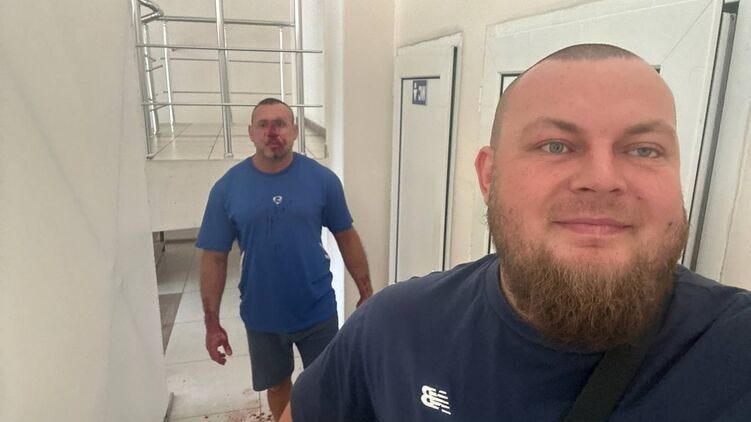
One of my favorite short translations is from July 8. I translated a facebook post by a middle class, liberal, patriotic journalist dismayed by the unpatriotic sentiment of his mobilized rural fellow soldiers. ‘The government has never given me anything except a Kalashnikov. Why should I be a patriot?’ was their retort. I’d say that this line just about sums up the true essence of the war.
It also represents what has probably been the largest shift in 2024 compared to the previous two years - with Ukraine’s highly motivated, middle-class urban nationalist volunteers exhausted, wounded, or dead, they are being replaced by unmotivated, poor, rural recruits who underwent the pleasure of being brutally mobilized.
A July 4 post was already describing the unreliable quality of new recruits, which proved to be one of the main trends of the year. In that July article, I also looked at some recent calculations of the true number of deserters. A September 20 post also translated some interesting calculations of desertion and KIA levels - 200,000 and 118,000, respectively.
Another recurring motif of the year was calls to lower the age of conscripts, first described in a June 28 post. That post also went into a particularly interesting aspect of Ukraine’s mobilization drive - enlisting the use of private security companies to do the dirty work.
A June 22 mobilization newsletter looked at impressive attempts to break out of Ukraine by draftable men, along with embarrassments in military and political communication.

The year was full of wholly depressing mobilization stories. A June 21 post looked at the pleads for help from a blind man sent to the frontlines, along with an underage man who was mobilized, paradoxically enough, because he was sick. An October 10 piece contained what was the most memorable mobilization story for me - a poor rural man, aged beyond his years by a lifetime of work, was killed in the mobilization office. His wife told the story to reporters, showing what she had left to remember him by:
That same October 10 piece also went into one of the year’s biggest corruption scandals, that surrounding the infamous military medical checks. In fact, much of the second half of the year saw constantly escalating corruption scandals relating to mobilization. Sometimes, I wondered whether the government was purposefully feeding the media frenzy as a way to distract from the frontline. An October 31 piece went further into this medical/mobilization corruption, along with some reflections on the deeper nature of the Zelensky elite.
Torture and extortion has proven one of the year’s recurring topics. I first treated it in a June 11 newsletter, looking at systemic torture and extortion in the prison system. The post also went into a corpulent nationalist on TV recommended feeding draft dodgers to crocodiles. Torture and extortion in Ukraine’s army were analyzed in a December 25 post. But one of the cases described in that post, whereby a unit commander forced his subordinates to build him a country home, is far from unique - I already described a similar incident in a June 14 post.
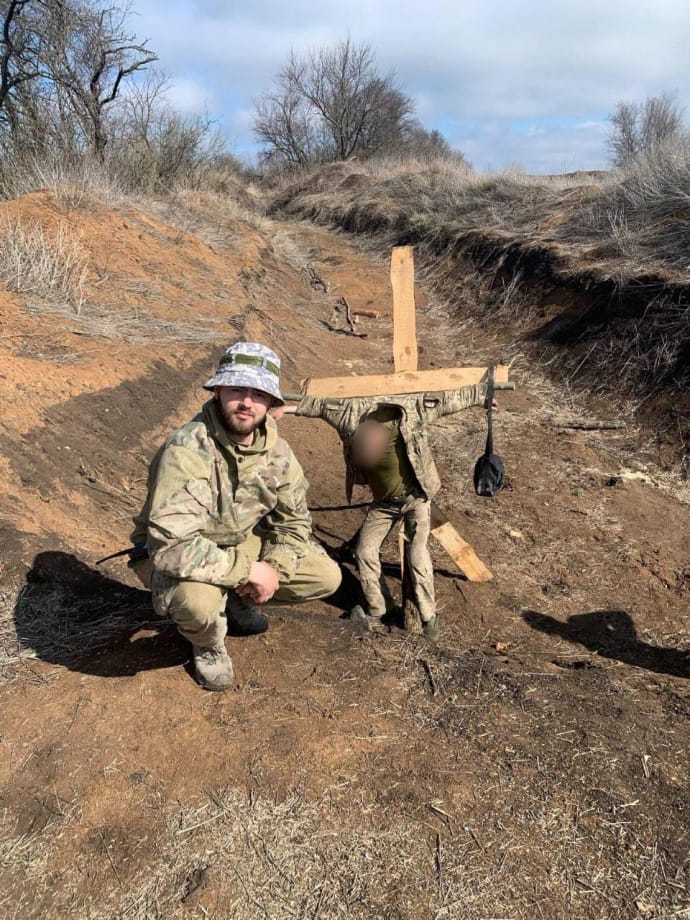
A July 15 post looked at several anti-mobilization protests in remote Ukrainian villages and border towns. In response, fan-favorite Evhen Dyky called to shoot them all dead. The article also had a look at possible ‘economic exemption’ - a legalization of the existing fact: the poor belong at the frontlines. One particularly interesting statistic in this article was that (officially) 200 men try to illegally escape Ukraine daily.
One of my favorite topics - because of my own personal experience - is the tendency for Ukraine’s most vocal nationalist hardliners to dodge mobilization themselves. I wrote about this with the figures of ex-president Poroshenko and crude crooner Orest Lutyi in an August 9 post. The topic was further developed in an August 12 article on how 133 of the country’s western/western-funded NGOs were legally exempted from mobilization. A highlight there was how much of the list was filled with either incredibly sinister biolaboratory NGOs or incredibly parasitic consultancy firms.
An August 29 newsletter covered the ever-louder calls from the mobilization office (on its public facebook page, no less) to kill those resisting mobilization. Draftable men aren’t the only ones at risk. The piece also went into the epidemic of wartime economic extortion in Ukraine, whereby spooks shake up businesses for rent in exchange for protection from treason charges.
A September 19 newsletter covered a range of the year’s ever-intensifying mobilization trends: corruption, violence, and hypocrisy. It features one of my favorite moments of the year - a pro-western liberal nationalist politician shames men who avoid mobilization, conveniently forgetting about the fact that her own husband lives in the USA. Meanwhile, as Bezuhla noted, the only men that end up at the frontlines are ‘those who didn’t have the money to ‘decide things’.’
An October 3 post opened memorably, with a new song glorifying desertion. It also provided some interesting statistics - apparently there are six million Ukrainian draft dodgers, and an officer claimed that only 30% of mobilized troops could be fit to serve, but only on conditions that officers stop beating them. The piece also contained plenty of characteristic stories from poor mobilized men. Here’s the song:
Unit commander…
Can get fucked….
And the whole brigade…
Can get fucked…
You bunch of devils…
I’m going quietly, without being noticed
To DESERT
An October 23 newsletter analyzed the conflicting statistics presented by Ukrainian officials on the number of men ‘successfully’ mobilized into the army. There were other statistics as well, such as claims that only one out of every twenty-five mobilized troops are motivated to fight. The post even depicted a struggle between thirty village women and a mobilization minibus. It also described some new suicides and murders around the mobilization process. A particularly piquant story surrounded the murder of an Armenian businessman in Odessa who was apparently in charge of the private militias who ‘help’ with the dirtiest parts of mobilization.
A December 24 article went into the blood-soaked mobilization machine. In it, we found out why nationalists are angry that mobilization officers aren’t shooting enough people who resist (because ‘they do it in the US’, after all!), and how parliamentarians are bothered daily with complaints about mobilized diabetics, schizophrenics and autists. There was also a particularly harrowing video of a man shot in a mobilization dungeon while a screaming woman tries to save him.
A December 25 piece continued the previous article’s analysis of the mobilization process, but now at the level of the army - it turns out that there is just as much corruption, extortion and torture in the army as there is in the process to reach the army. We also learned about how the widespread alcoholism among soldiers is ‘forcing’ their seniors to beat and otherwise extra-judicially discipline them - a fine line between extortion and justice.
This series was brought to an end with a January 1, 2025 post about how unmotivated mobilized troops are deserting the army en masse. Of course, it is less an end, and rather one stage of a life cycle. Mobilization, extortion, desertion, repeat. On the other hand, one wonders just how sustainable such a ‘life’ cycle is.
Energy and economics
On February 21, I translated a piece from Ukraine’s liberal media on what Ukraine had to do to win the drone war. A June 15 post looked at Ukraine’s typical wartime neoliberal darwinism, with social policy officials promising that pesky pensions are not to be expected in future. A June 18 post looked at the country’s wartime privatization drive - ‘nothing left to sell’, as the NYT put it.
A June 26 post had a look at Ukraine’s military industry, segueing into a look at the West’s overall difficulty in producing simple explosives. Ukraine’s military industry and its paradoxical destruction by liberal nationalists is one of my great passions, finally analyzed in my December 13 post on the legendary Motor Sich aeronautics factory. This is a series I most definitely plan to continue, since it reveals so much about Ukraine’s post-soviet condition, particularly in terms of the struggle between the ‘oligarchs’ and the ‘sorosites’.
A July 1 post looked at dead souls in the army and economic breakdown at the home front. It also first analyzed the phenomenon of internally displaced people (IDP) returning back to their homes in areas controlled by the Russian army, motivated by economic reasons. A December 3 post analyzed the same topic.
A July 25 post looked at how Russia’s strikes on Ukraine’s energy complex has impacted citizens. ‘Stop the energocide’ was the slogan written on many posters at anti-blackout protests - not directed against Russia, but against Ukraine’s energy elite, the sector on which the country’s oligarchs made much of their wealth. The article also looked at recent statistics on increasing poverty levels.
A July 19 article looked at the IMF’s latest draconian demands, and the Ukrainian government’s eager compliance. But as usual, the western partners were unsatisfied with the scale of social spending slashes.
What better metaphor for war than a cemetery mafia. Just such a promising sphere for racketeering was analyzed by a September 24 economics newsletter. It also went into corruption in the (non-) construction of fortifications, the booming onlyfans economy, and a new crop of Zelenskite economic elites - such as the mysterious Mr Krupp.
Elite struggles
One of the first posts of the year was a short translation, but it was one I would constantly refer back to in later posts. This January 5 post is a translation of an article about Oleksandr Dubinsky, a Ukrainian parliamentarian imprisoned by Zelensky for his role in uncovering information about Hunter Biden’s activities in Ukraine - ironically, since Zelensky was the one who originally solicited said revelations (back when Trump was in office). With Trump barreling back to the white house, I look forward to writing more about Hunter’s escapades in Ukraine. More importantly, how the Ukrainian and American political whirlwinds interact.

A January 11 post continued my translations of 2000s interviews with the notorious oligarch Igor Kolomoisky. It was filled with his usual zingers, such as a riddle about ‘the difference between the hamster and a rat’, and why his chief opponent Yulia Tymoshenko is a ‘trotskyist black widow’. He himself, of course, is a contemporary Robin Hood.
A March 18 newsletter analyzed the parliamentary crisis which has only deepened over the course of the year, as well as Zelensky’s own legitimacy issues. A June 3 piece went deeper into this parliamentary crisis. It also analyzed grey cardinal Andriy Yermak’s ever-deepening concentration of power alongside the defeat of the ‘Zaluzhny project’ - the military chief unceremoniously removed at the start of the year because of his excessive political popularity.
A July 11 post went into much more detail on Yermak, who is thought by many to be the most powerful man in the country. He is quite a fascinating figure, a show business veteran like Zelensky, but a lawyer, not an entertainer. His supposed (much played-up by the nationalist opposition) links with Russia and quite real links with Ukraine’s business class (particularly Kolomoisky) and Trump make Yermak a figure I definitely plan to revisit this year.
Some telegram roundups also added an eclectic range of perspectives on Ukrainian elite struggles. These posts are too varied to put into one category. My first such post was in June 16, translating analysis from my favorite ‘Tales of the IV Reich’, as well as a range of other Ukrainian rightwingers, social democrats, and Trumpists. Two posts, on June 19 and June 20, added to the cast of characters, including some interesting ruminations on Hobbes and Zelensky.
A September 9 piece tracked the latest developments of the parliamentary crisis, along with another elite split - that between Yermak on the one hand and prime minister Shmyhal and ruling party leader Arakhamiya on the other. This article also featured one of my favorite insights of the year, from Ukraine’s flagship liberal paper Ukrainska Pravda. The speaker there claimed that the organizational chaos they were endlessly bemoaning in the army was simply another manifestation of the broader anarchy and rent-seeking characterizing Ukrainian society. He even inserted it into a grand historical narrative:
Dmytro Dontsov [the influential Ukrainian nationalist-fascist philosopher of the 1920s and 30s] had a book called ‘the beast without a head’. That’s what the Polish commander of Kyiv called Ukraine when he was faced with the Khmelnytsky uprising. A beast without a head, rabble with plenty of strength and energy, but no leadership, no elite. The centuries pass, and the problem remains…
If you’ve been reading me long, you are probably acquainted with the term ‘Sorosites’ - not of my coinage, but a true Ukrainian product. A March 31 and April 4 series analyzed this political group and their apparent struggle with Zelensky.
I say ‘apparent’ struggle, because a very long and complex October 1 post would analyze theories on how Zelensky and the Sorosites are actually in cahoots. This article was dedicated to analyzing the deep political struggles between political ultra-heavyweights Yermak and Tatarov amidst rumours that military intel chief Budanov was set to the removed. Though the reality of said Tatarov-Yermak rivalry remains a metaphysically complex question, the article is still quite useful in giving information on a range of elite clans.
There are many conflicts in Ukraine that might be life-or-death struggles or might just be political show - yet another crafty political technologist at work. Often, both interpretations are correct - and death on air is often quite real. After all, this is a country where a comedian who played president on TV ended up assuming the role in reality as well. Zelensky’s latest theatrical claims of violent coup plots against him were analyzed in a June 30 post, along with the much more real rise in domestic violence against women.
The struggle between Zelensky and the Sorosites, to whatever extent it ‘really’ exists, certainly exists in the context of Zelensky’s own tensions with his Washington patrons, as analyzed in this June 9 post. A June 12 post even went into conflicts within the Sorosite camp itself.
In any country, struggles between various elite fractions often take place in the arena of ‘corruption scandals’, and nowhere is that more true than Ukraine. An April 18 post analyzed how scandals over ineffective protective covering over the country’s energy system was being used against pro-western figures like Naiem and Kubrakov. A June 17 post looked at the Golyk corruption scandal, in which pro-western anti-corruption organizations tried to get one of Zelensky’s entourage - with no luck.
All wars are opportunities for certain people. Nationalists in Ukraine and Russia both like to talk of how war is creating ‘a new Elite’, with a capital E of course. Whether one believes that or not, it has certainly created some strange new characters. One of the strangest is Ukraine’s Mariana Bezuhla, to whom I dedicated a long post on September 5.
Bezuhla played a major role in the media preparation to the removal of army chief Zaluzhny at the start of the year, constantly accusing him of various forms of corruption and military corruption. She embodies much of that wonderful post-soviet term ‘political technology’ - a proxy or a puppet, a government psyop that is forced to threaten the government itself to prove her own legitimacy. She credits herself with bringing Syrsky to power as the new army chief, but she had a strange reaction to “Syrsky’s” Kursk operation, as I wrote in this August 19 piece. Essentially, she both praised it but also made Syrsky into the main protagonist of the story - clearly distancing her (not-so) secret boss Zelensky from any responsibility.
A September 27 post went into one of the most interesting, subterranean grottos of Ukrainian politics - the remaining ‘pro-Russian’ elite. Given their propensity to be imprisoned or mysteriously die, they have to vote in parliament quite loyally in favor of Zelensky’s legislation - an advantage resented by anti-Zelensky liberal nationalists. But beyond that, the political cunning of these ancient heavyweights of the Ukrainian political arena means that they still wield considerable power - and if there are ever any significant negotiations with Russia, it is likely these men who will play a major role. Unless, that is, they aren’t killed in the process. The piece also went into a range of important political intrigues from the 2000s, and the important matter of how Yanukovych’s defeat in euromaidan was in large part due to betrayal from within by the still-powerful Levochkin.
An October 7 post went further into the ongoing shadow war between Zelensky and military intelligence (GUR) leader Budanov. Besides the struggle over military industrial rents, my favorite part of that article was the translation of nazi rap glorifying their patron Budanov:
Why are we so bold?
Kyrylo Budanov supervises us.
He gives us assignments, about what and about whom.
When we read.
If he says not to release a track, we don’t release it.
We’re GUR members, damn it.
We were blasting in Bakhmut
We fucked Kadyrov
….
Doctor Mengele, this is still like a concentration camp.
Yes, I’ve seen the future, and we didn’t lose there.
Nord Division is like blowing up the Kursk submarine.
Historical note: a lot of Russians died there.
..
All of Ukraine's counterintelligence says that we are art.
Before interviews, Budanov listens to our tracks in Russian.
Nord Division is like the terrorist attack in the Moscow metro,
Where women and children died, and now I feel warmth in my soul
….
A lot of police in the country, when it's your turn to go to war.
Catch the wave with me, try to get into the assault company.
Don’t take this crap into your mouth, always know your worth.
Maybe you’re a badass fighter, but you saw that in a dream.
Nord Stream exploded, for that we thank the GUR and the SBU.
Now I bring news,
A very sad one for you, my friend.
The war won’t end,
Because it’s not beneficial to anyone. 2024,
A new war in the new year.
…
Don't preach peace, but preach only violence.
To the borders of '91, death is what we must reach.
This landing is doomed, I have already died for Ukraine.
…
You bastards will pay in blood.
Enemies of common sense and the white race.
A white key is on my shoulder.
Stand when the lieutenant speaks to you.
Lie on the floor when the RDK [Russian Volunteer Corps, Budanov-created group of Russian neo-nazis] comes in.
A Sig Heil to everyone, and goodbye.
….
We also want to reclaim our native land.
The gas van is coming, climb in, Vazgen.
Now we’re going to clean the streets in Moscow.
We will leave our mark, in the dark we are the light.
For Holy Rus', we’ll crush all of you now.
A December 5 post dug into a topic that I expect will develop much more this coming year - Ukraine’s repressed business class, personified by Igor Kolomoisky, awakes from (imprisoned) political dormancy. The spark that lit the prairie fire? Trump’s victory. As I wrote in that piece, Kolomoisky (who once had a shark tank) and Trump go way back, lubricated by the likes of Hunter Biden and Boris Epshteyn. The article also looked at the struggle over Ukraine’s energy resources between the country’s richest man, Rinat Akhmetov, and the EU. But before all that, it provided the reader with a contrast to these exciting elite struggles, by looking at what the masses are living through - as one military commander put it, 90% of mobilized soldiers are ‘poor villagers’.
The frontline
When I started writing regularly at the beginning of 2024, there wasn’t too much happening on the frontlines. But that changed quite dramatically, with much of the year seeing the Russian army methodically digest Ukraine’s most fortified areas.
As such, I overcame my distaste for couch-based military expertise and started looking at events on the battlefield. Generally limiting myself to translation of Ukrainian military analysis, lest I start embarrassing myself.
A March 2 piece went into the organizational degradation of Ukraine’s army alongside Russia’s organizational improvements. It also analyzed weak Ukrainian fortifications. These two would prove to be recurring motifs of the year. A July 13 piece went into Bezuhla latest screeds against army chief Syrsky, as well as frontline crises with the 41st Brigade. It also went into disappointment over F16s - remember those? - and the growing horde of under-staff, under-motivated ‘zombie brigades’.
On July 31, back when I wasn’t doing frontline updates so often, I gave my thoughts on Russian and Ukrainian military strategies as a whole. Essentially, both hope for a strategy of attrition. More importantly, I reflected on the dim prospects said strategies bear for Ukrainian statehood.
On August 11, right as Ukraine’s Kursk offensive first took place, I dedicated a telegram roundup to it. Of particular interest is the effort made by the Russian oligarch Malofeev to destabilize Russia from within, while himself posing as a Russian ultra-nationalist. I hope to dedicate some posts to this strange figure this year, along with the fascinating rumors surrounding the late Evgeny Prigozhin and his possible links with Ukraine and western intelligence services.
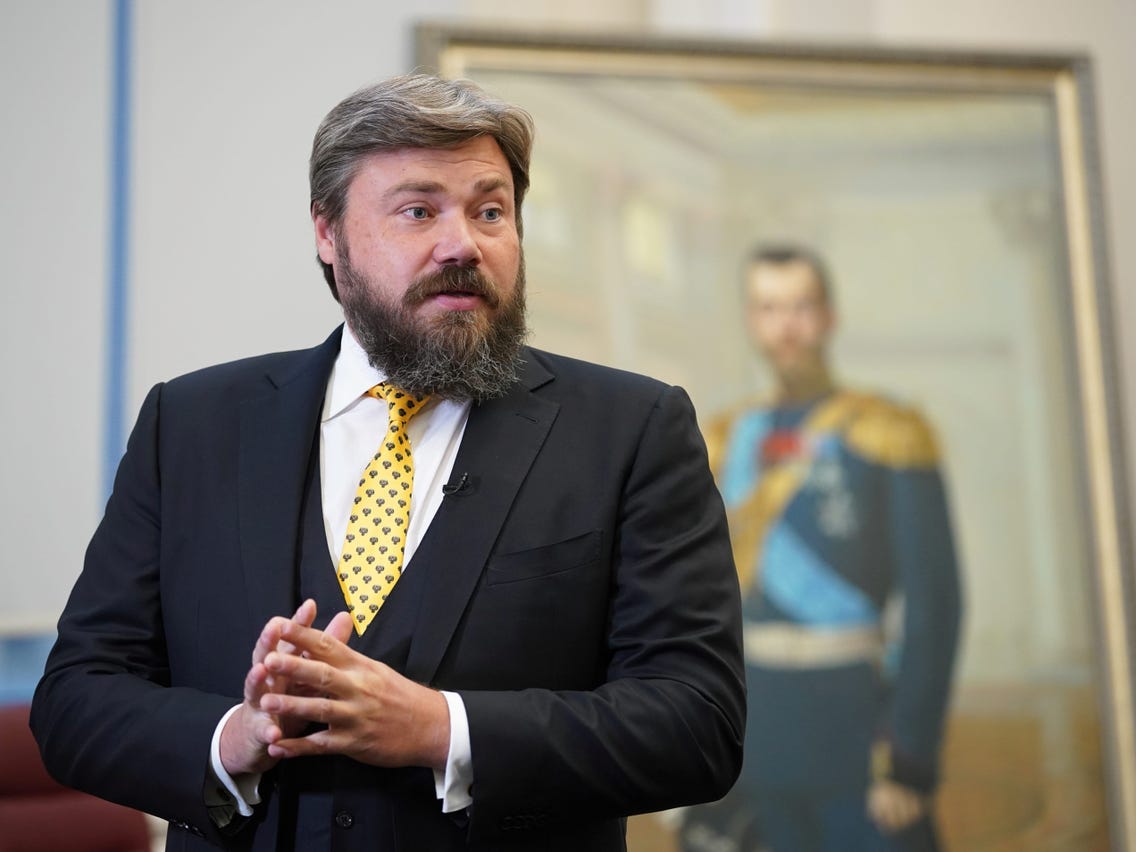
My frontline updates became quite regular from August onwards. An August 28 piece went into the Ukrainian retreat from Novohrodivka. This was a particularly important event, since it represented a shift in the type of advances being made by the Russian army. Before, they would take settlements ‘in the forehead’, as the idiom goes, through heavy use of artillery and significant losses.
But in 2024, Russian tactical improvements and Ukrainian manpower issues have meant that towns - like Novohrodivka - have been falling to the Russians before they are destroyed by artillery. Instead, the Russians encircle their prey, cutting off supply lines or rendering them unusable through constant fire control. As a result, the remaining Ukrainian soldiers are forced to retreat as the Russians stride in with minimal resistance. Of course, in plenty of other sections of the front the mutual-assured artillery Armageddon continues.
An August 29 piece went into speculations from both Ukrainian and Russian military telegrams regarding the Kursk mystery - why was Ukraine dedicating much-needed elite forces to the strategically irrelevant Kursk area in Russia, while losing quite important land in Ukraine’s own Donbass region? The Russians, with their characteristic conspiratorial dooming, predicted that this was merely part of a cunning Ukrainian plan to launch a counter-offensive in the east as well. Given how much time has gone by, while Ukraine loses land it controlled both in Kursk and Donbass, it is harder and harder to believe such tales.
Another interesting prediction in that piece concerned Chinese drones - Ukraine’s top drone man was very worried that Chinese restrictions on drone exports would badly hurt Ukraine. It’s hard to tell to what extent this has been a major factor, but I certainly have been reading plenty of accounts of growing Russian drone superiority on the battlefield. A topic I hope to cover in more detail this coming year.
When churning through the swamps of telegram in search of content for this substack, the real gems for me concern Russian and Ukrainian tactics and strategy. A September 12 telegram roundup went into Azovite reflections on improving Russian tactics, as well as the worrying tendency towards creating incompetent ‘zombie brigades’.
A September 30 post translated our brave military telegrams right from the thick of action in Vuhledar, then in the process of being digested by the Russian army. An October 9 post served as the obituary for the town. The article had it all - mass desertions and subsequent officer suicides, a ‘butcher’ commander, serious casualties and suspicion among soldiers as to whether they had been ordered to hold the city as media support for Zelensky’s latest diplomatic tour.

An October 16 post was filled with analysis of Ukraine’s organizational issues. Besides the usual complaints about incompetent newly-formed units, unmotivated mobilized recruits and organizational chaos, two things were particularly memorable. First, one Azovite telegram lamented the enormous gap between Ukrainian and Russian military salaries. Next, another Ukrainian military analyst bemoaned Russia’s devotion to the task of training a new officer class, while Ukraine’s own officer elite is worn down without being replaced. Another important result of organizational issues was that Ukrainian soldiers were being rotated from the front far less often than Russian soldiers, resulting in exhaustion and demotivation.
An October 24 post went into the latest territorial losses around Kurakhove and Selydove. It also analyzed the latest tik tok trend - posts about missing relatives in the 152nd brigade. Of particular interest was a comparison by former top general Krivonos between Russia’s large-scale officer training system and Ukraine’s.
Ukrainian militarists love their German analogies - one good military telegram I often translate is called ‘Mannerheim’s Son’. An October 29 post went into a potent prediction by Azov’s military analyst Ponomarenko: without changes, Ukraine is heading for the ‘Wehrmacht 1944 scenario’. Besides that, the article went into fortification issues and the execution of retreating soldiers on the Ukrainian side.
One of the key trends of the year has been disappointment regarding the quality of Ukrainian fortifications. A November 5 piece analyzed the latest fortification scandals, the situation on the Pokrovsk and Selydove fronts, and Russian tactics across the frontline.
One of the most tiring stories of the year has been the supposed onslaught of North Korean soldiers on Ukraine. A November 18 post translated Ukrainian military doubts that said soldiers existed at all. It also went into the latest repression of a top politician who had called for a ceasefire - yet more evidence that Zelensky’s supposed ‘turn towards peace’ is purely rhetorical and aimed at foreign audiences.

A November 19 military newsletter was filled with material on Ukraine’s organizational issues. I even went into the army’s strange organizational structure, all the better to introduce an interesting piece by a western-funded Ukrainian publication. This piece - shock-horror - analyzed inefficient Ukrainian military authoritarianism versus effective Russian military decentralization and low-level initiative. The piece also looked at some other complaints from Azov that Russia’s military structure was superior to Ukraine’s, as well as some interesting descriptions of life at Ukrainian training centers.
A November 21 newsletter looked at former army chief Zaluzhny’s call to ‘learn to die and kill’. The rest of the article analyzed possible military developments in the southern Zaporizhzhia region, official lies about the Kurakhove front, golf caddies and tanks on the Pokrovsk front, and renewed movement in the Chasiv Yar area.
A November 27 post analyzed developments on a new frontline eruption, around the town of Velyka Novosilka. This article treated a range of topics, from defective Ukrainian shells to manpower shortages and retreats to bypassed and low-quality fortifications
A December 3 military newsletter looked at events both on and behind the frontlines. At the frontlines, we analyzed why and how the Russians are using more and more unusual vehicles, and how these mopeds and ladas are not worth mockery. Far from the frontlines, we saw that supposed Zelensky stooge Bezuhla is now calling him a Russian spy - much is required of her role.
A December 10 article was filled with ire and dire predictions. In terms of anger, I translated attacks by the Azovite ‘Tales of the IV Reich’ on ‘the global capital of faggotry’ - the Netherlands. This polemic was inspired by NATO leader Mark Rutte’s latest comments on Ukraine’s holy mission to fight Russia for eons to come. As for predictions, there was some interesting discussion of whether the Russians will find it easier to move forward after taking the city of Pokrovsk.
A December 19 piece was titled ‘treason or stupidity’. There were plenty of events described meriting either description, including accounts of 500 soldiers lost per week in the Toretsk region, the ignominious fate of wounded soldiers, claims by nationalist journalists of 105,000 killed or missing in action, mobilization rates lower than losses, frontline soldiers cursing nationalist civilians, and an IED attack by a civilian against a mobilization center.
Another December 19 piece went into incompetently-built fortifications, Azovite admiration for Juche economics, and the latest frontline events. We also found out about our Ukrainian military correspondent’s historical role-model - SS Commander Oscar Dirlewanger.

A December 28 article might have been over-stuffed with military events. In future, I will have to figure out how to condense the information into a readable form. In any case, beyond the various dispatches of the latest retreats, losses, and Russian tactics at all different sections of the front, there was also a new rap track released by our frontline Cossack ‘Muchnoy Jugend’.
Nazis and call centres
Who doesn’t love reading about the latest antics of Ukraine’s neo-nazis? Back in the heady days of February 13 2022, I published a long article about Evhen Karas, leader of the organization C14. He represents the most ‘illiberal’ wing of Ukraine’s neonazis, but there are also ‘liberal neonazis’.
I also wrote about their most well-known representative, Serhiy Sternenko, and his US-citizen patron (and neoliberalizing health minister), Ulyana Suprun, in an April 25 2024 post. Of particular interest was the Suprun family’s roots in the US military industrial complex, their involvement in online/facebook ‘anti-disinformation checking’, and Sternenko’s ever-rising star.
I wrote more about Sternenko and his merry crew in one of my favorite series on this substack - that dedicated to Ukraine’s scam call centres. Stripper parties, nazis, drugs, ‘the Mexican’, the absurd Kolya Tyshchenko, the Armenian oligarch that created Azov, gambling empires, the nazi-mafia funeral racket, the Dnepropetrovsk crime nexus, psychological enslaved scam victims, my friend Ralph from Zimbabwe… Click here for: the June 24 first part, the June 25 second part, the July 1 third part, and the July 2 finale. A June 28 post also looked at how Azov representatives called to ‘mobilize the call centres’ - despite the fact that the Azovites themselves are known stakeholders in the industry.
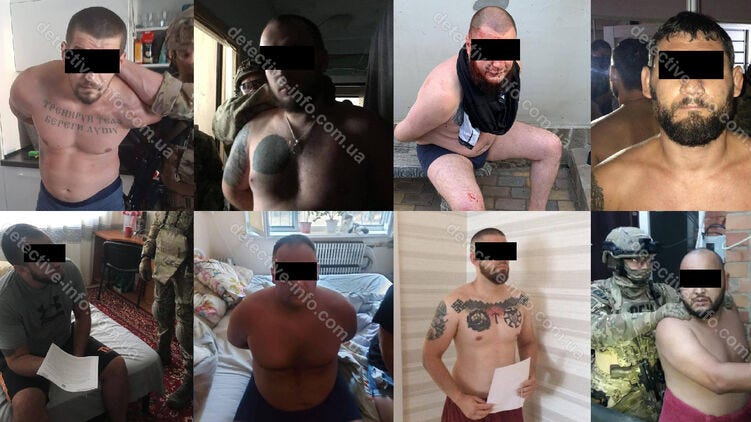
By the way, I certainly do hope to write more about Sternenko this coming year. My friend Moss Robeson has just put out an excellent piece on him. I hope to analyze in more detail Sternenko’s conflict with the Azovite wing of Ukraine’s fascist movement. I already wrote about their different positions towards Trump, Biden, and a ceasefire in this September 16 post. A December 10 post also went into the Sternenko-Azov rivalry.
Evhen Dyky is another common feature on my substack - one of the most ridiculous and widely-hated nationalist TV personalities in Ukraine. He claims to have been a commander in the far-right Aidar batallion, whose activities were described in detail by these old HRW and Amnesty reports.
Nowadays, Dyky isn’t doing so much fighting. I first wrote about Dyky and his questionable leadership of Ukraine’s very well-funded Antarctic Research station in a June 7 post otherwise dedicated to mobilization and attempts to escape the country.

Another particularly piquant topic is the fascist love for Paganist esotericism, first analyzed in this June 28 post, and again in this July 8 article. A July 7 post went into more detail on top Azovite paganism-enthusiast Dmytro Kukharchuk and his thoughts on the apathetic treachery of 70% of Ukrainians. According to him, only 30% of the country are ‘true Ukrainians’. I also took the opportunity to bring up some similar sentiments among Ukraine’s 20th century nationalist ‘heroes’.
Arms and organ smuggling, drugs and drones
Besides scam call centres, another sector possibly ripe for investments is Ukraine’s marijuana fields, whose legalization was analyzed by our dear friends on telegram in a June 23 post. If you are willing to brave very strong competition, you might also consider the online gambling market, whose appeal to frontline soldiers I described in a July 4 post.
Another possible source of passive (or quite active?) income was analyzed in this May 15 piece on killings motivated by arms-smuggling. The themes resonate with an old 2022 translation of mine - ‘A Dead Man’s Donbass’, on the very same topic but in the 2014-21 period.
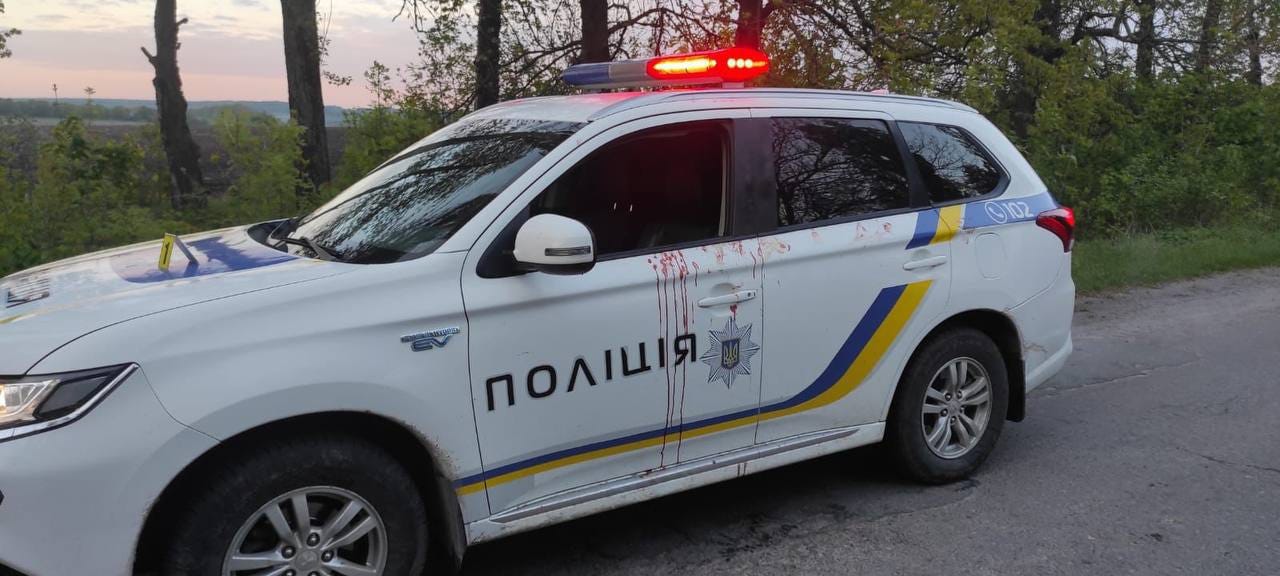
A June 14 post analyzed another particularly intriguing criminal market - organ smuggling. It turned out that some of Ukraine’s top officials in the ministry of health were involved. This would be analyzed in more detail in a June 17 post.
A November 14 post was even merrier, dealing with the Thiel-Musk military industrial ecosystem and the Ukrainian drone war. It introduces Palmer Luckey, a plucky Silicon valley startuper favored by the Trump elite. He claims that by supplying Ukraine (and Israel and all the other friends of the US empire) with more effective but cheaper drones, Trump will be able to make do on his campaign promise to reduce funds to Ukraine.
Quite a cunning rhetorical trick - instead of actually ending the war in Ukraine, simply make it more profitable and less expensive. Indeed, such discourse seems to assume that the war can even be ‘won’ with such an approach. There was plenty else in the article, including woes by Azovites on how even mobilizing 500,000 will not solve the structural issues in the Ukrainian army, and titillating stories of Kolomoisky-Kosovo narco-networks.
And on November 25, I put out this substack’s most popular post, which concerned by own experiences with the drug-hipster-nazi nexus in Ukraine. I also went into the evidence on Zelensky’s own narco-proclivities. I’d like to pat myself on the back that I had the restraint to stay away from the topic of the president’s nasal tastes over the course of two years of writing, by the way.
History
I didn’t plan this, but the first and last posts of 2024 referenced each other through Konstantin Paustovsky’s brilliant 1939 short story ‘the Violet Ray’. The first post of the year, January 5, was a translation of the story and my own commentary on it. History is truly a nightmare from which it is difficult to awake.

One of my favorite topics is at the centre of Ukraine’s national mythology - the old Cossacks, the romantic (or not so romantic) pirate outlaws that existed on the territory of modern-day Ukraine some centuries ago. But while the historical figure of the cossack has disappeared, there are many who believe that the character of the cossack never died, as I wrote in one of my favorite pieces of the year, the May 30 ‘17th Century Cossack Parapolitics’.

Of course, people don’t make history, but simply act within its boundaries. And over the centuries, Ukraine’s history has been largely determined precisely by its boundaries - or rather, the lack thereof. This was the topic of my September 5 piece ‘Battlefield Ukraine: 1420-1709’. In it, I looked at how Ukraine’s flat geography at the intersection of empires allows us to better understand both the figure of the Cossack and that of the ever-expanding Russian Empire.
So far, my historical excurses have skipped over the 19th century, a mistake I certainly hope to remedy this year. For instance, I hope to write more about the crucial role of Ukraine in Russian national self-consciousness and self-constitution. Back then, Ukraine represented an anti-western return to Russia’s slavic roots. I also hope to write about the role of Ukrainian elites in the Russian empire.
But there has been some coverage of the 20th century. There can be no understanding of Ukraine’s current elite struggles without knowledge of the grand oligarchic clan wars that have gripped the country since - and before - the fall of the Soviet Union. A July 22 post gave just such an introduction into Ukraine’s clan wars. In it, I explained how the real conflict that gripped the country wasn’t that between east and west - but that between two fractions of the eastern industrial elite, those from the cities of Donetsk and Dnepropetrovks. This conflict stretched back before the 90s, deep into the core of Soviet politics.
My analyses of the spook-nazi international also took place at the intersection of the 20th and 21st centuries. Continuing on from some December 2023 posts (part one, part two, part three) on the history of Ukraine’s secret services (SBU), I wrote a review of the interesting archival-based ‘Hitler’s Shadow’ on January 7.
There is certainly no more important event in Ukraine’s post-Soviet history than the 2014 euromaidan revolution (or coup d’etat, or however else you want to call it). Coincidentally, I was actually in Ukraine at the time - my family even took me to a rather pathetically-attended local euromaidan gathering.
Late January saw me translate the recollections of a Ukrainian journalist as he infiltrated the fascist ‘Right Sector’ during the 2013-14 euromaidan protests. ‘After interrogations, someone has to clean the toilet’ was a memorable line. This three-part series is a good complement to my historical work on the euromaidan events themselves.
In a May 18 post, I tried to gather together a timeline of key events (from February 20 to March 17) relating to the anti-maidan protests in east Ukraine, which eventually coagulated into war. This series continued with a May 23 post, which covered the period from March 18 to April 13 - the point at which the Ukrainian government declared an ‘Anti-Terrorist Operation’ in the east.
Thought pieces and travelogues
With such a plethora of topics, it can be quite nice to take a step back and look at the big picture. For me, this often means working through some old memories. A July 22 post looked at four memories from wartime Ukraine, along with some ruminations on why I write at all.
An August 22 post on ‘Unknown Victims and Universal Lessons’ became one of my most popular. In it, I also tried to answer the question of why I write, focusing in particular on all those who fall victim to the Ukrainian military regime, but whose fates are rarely broadcast abroad.

A September 11 piece thought though the post-soviet theory of history. What better day for historical reflections! Like many things in Ukraine, its historico-philosophical tensions could be considered characteristic of many countries. Namely, a tension between post-historical nihilism and suprahistorical euro-nationalist teleology. There was plenty to think upon in this post, including nuclear nazi hentai, EH Carr, my own relationship to History, and the typically Ukrainian phenomenon of khataskrainichestvo - ‘my hut at the edge of the village’.
A December 9 piece reflected on my February-March 2022 journey through west Ukraine and Romania. It was meant to be about Romania, but I ended up only describing the road to it - but what a road it was. The world toad festival, Barbarossa larp posters in wartime west Ukraine, and one of the greatest characters I’ve ever met, the coked-up Romanian restauranteur in wartime Kiev.
The Romania series was continued with a December 17 post, this time about Romania itself. Soon, I hope to write more about Romania, and ideally Poland as well - comparing their politico-economic elites to that of Ukraine, and interrogate the meaning of the term ‘oligarch’.
To be continued
With that, the year is over. I hope my readers had a good new years - unfortunately, I was sick with the flu. But newly invigorated, I look forward to keeping up with the flow of events with the reader.
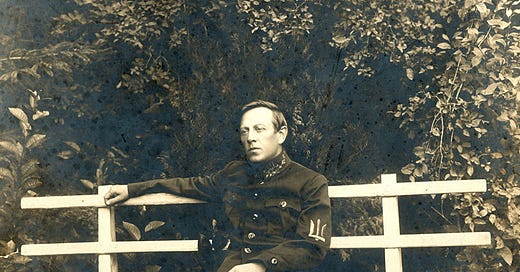



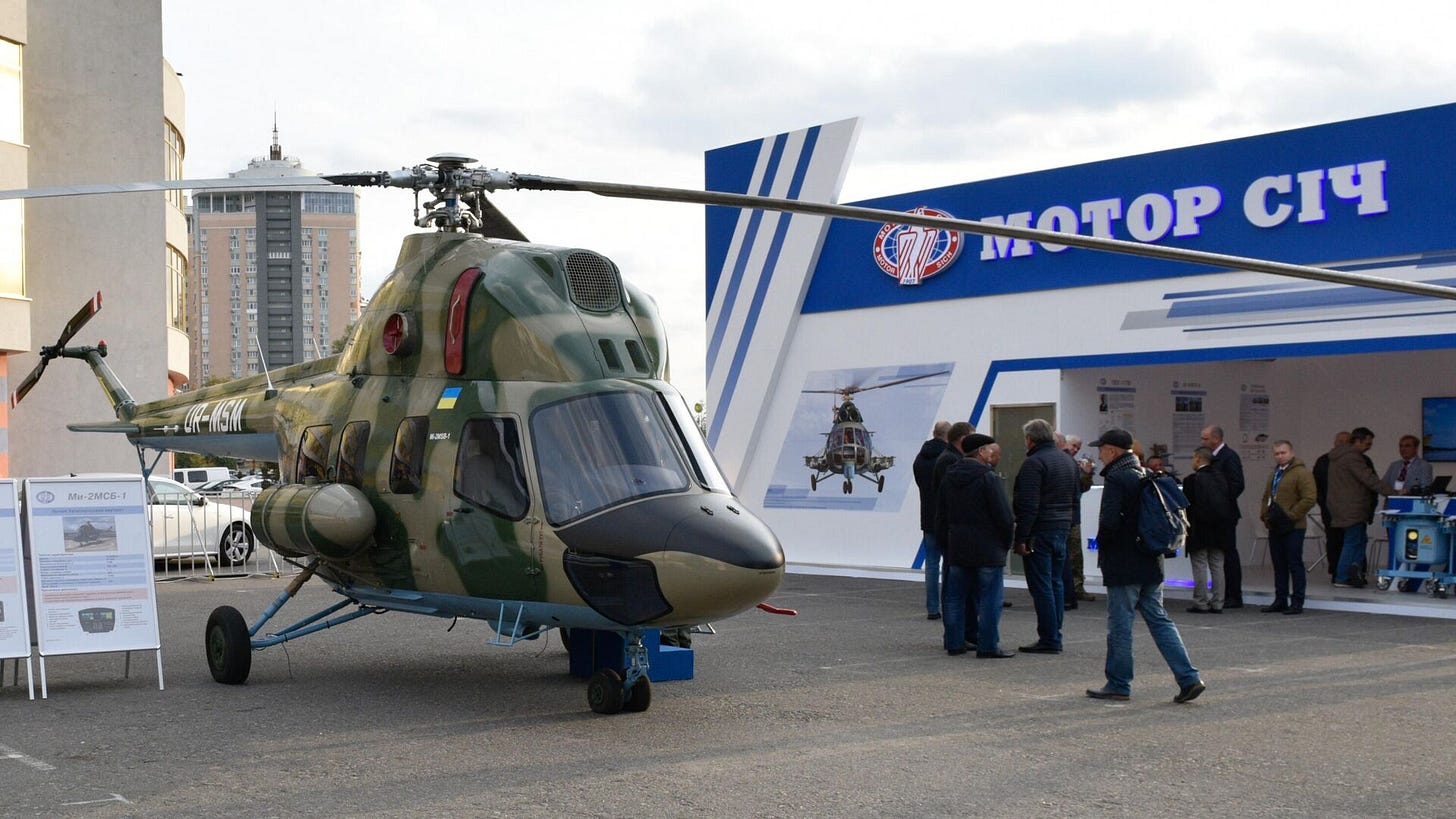
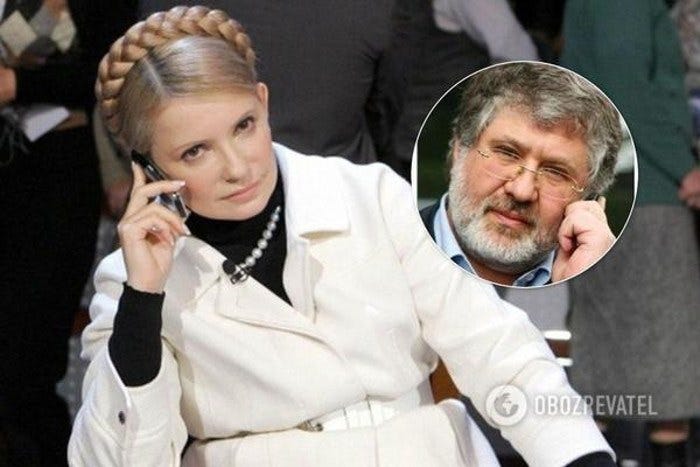
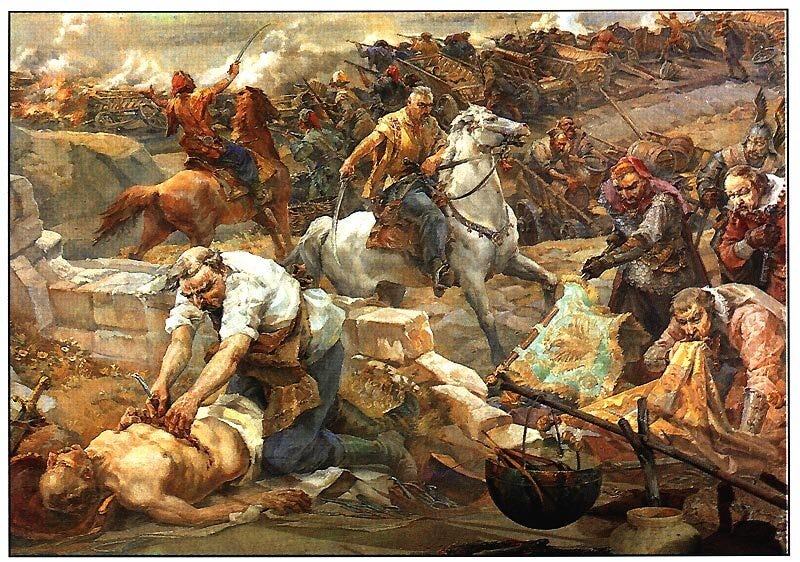


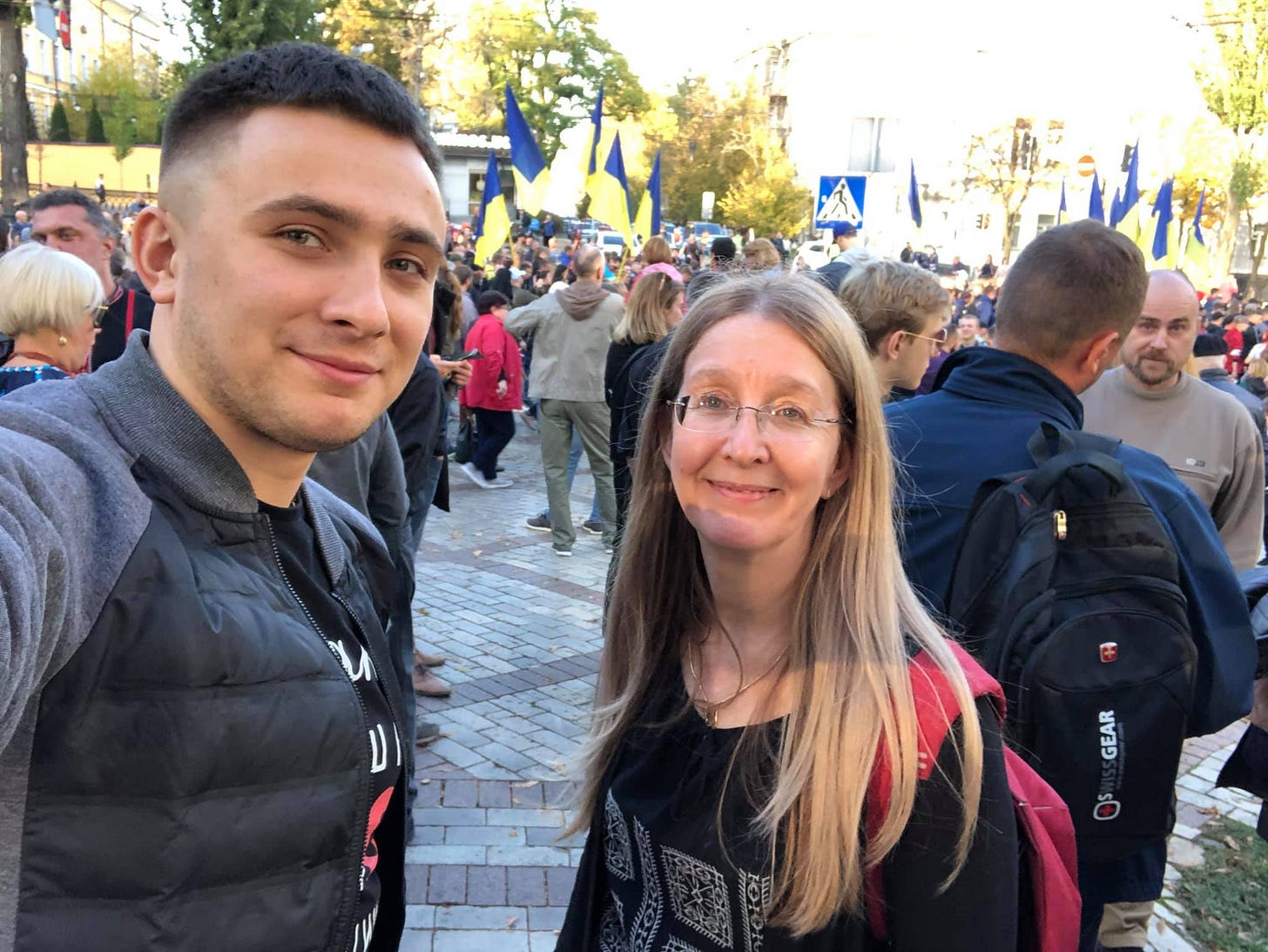


Thank you for this precious recap. Seeing the whole instead of separate posts - oh my. And it all hits you in the heart.
Your coverage of 'mobilization' in the Ukraine feels like nothing has changed since the compulsory harvesting of 'recruits' among hapless serfs under Peter 'the great'.
In this internal strife among kin ever going to get resolved...
warm wishes for a productive 'new' year. Your writing is much needed.
Before reading this, I just wanted to say your episodes on Subliminal Jihad were excellent. I hope everyone gets a chance to check them out. I needed reminding about the big picture of this conflict and also learned a lot of sus details I didn't know. Totally lit, not ditch
https://soundcloud.com/subliminaljihad/sj-228-events-in-ukraine-pt1